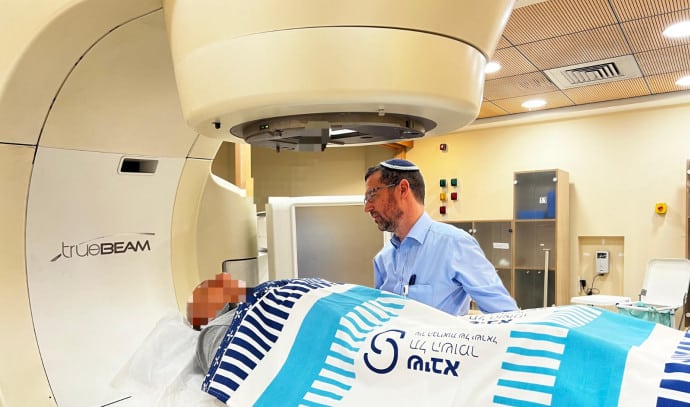Experts at the Sheba Medical Center in Israel have developed a new radiation therapy that targets the celiac plexus nerve and significantly reduces the pain caused by pancreatic cancer, reducing the pain patients suffer while undergoing life-saving treatment, and is now included in the new American guidelines for treating this deadly disease.
Pancreatic cancer is one of the most debilitating, fatal malignancies in patients, often with a high mortality rate within months of late diagnosis. The experts of Sheba Medical Center have developed a new method to relieve the pain that patients face during intensive treatment aimed at saving their lives. The development is published in the latest issue The Lancet Medical journal.
Severe pain is characteristic of pancreatic cancer because the pancreas is very close to the central nervous system called the celiac plexus. Pancreatic tumors press on this nerve or penetrate into it, causing severe pain. This disease causes great suffering to patients, affecting their daily activities and quality of life.
So far, the standard treatments for this disease are pain-relieving drugs or in severe cases where the pain is resistant to drugs, invasive treatment – by injecting anesthetic substances directly into the celiac plexus nerve and disabling it (Celiac Block).
The new research started in recent years is led by Dr. Jacob Lawrence, head of the Radiation Institute at Sheba Medical Center, in collaboration with the Israel Cancer Society and other researchers. The study examined the treatment method of a single radiation session using high-dose X-rays directly to a nerve in severe pain.
The international study, conducted in the US, Canada, Poland, Portugal and Israel, involved 125 patients who received a single dose of high-dose radiation therapy to the celiac plexus nerve. 53 percent of them reported a significant reduction in pain and a significant improvement in their quality of life as a result of the treatment.
Reported side effects are mainly mild, and include fatigue and some nausea on the day of treatment.
Pain is only one of the reasons.
The study’s findings have already reached a milestone: the treatment has been included in the new US pancreatic cancer treatment guidelines and is now available to most patients in the US. Patients can now get a new treatment at Sheba Medical Center.
“Pain is one of the biggest causes of suffering in pancreatic cancer patients,” said Dr. Lawrence. “These are severe pains that affect patients’ daily activities and quality of life. As the pain worsens, patients require high doses of morphine-family drugs, which have significant side effects. The new radiation therapy is relatively simple and can significantly reduce the patient’s suffering.
The celiac plexus is a complex network of nerves located in the stomach near the pancreas. Pancreatic tumors can cause severe pain when they press on this nerve. A common method of pain relief is to block this nerve using an anesthetic injection known as a celiac block.
The new method, developed at Sheba Medical Center, uses one high-dose radiation session to achieve similar pain relief, while being less invasive and with fewer side effects. This development is now part of the US guidelines for treating pancreatic cancer, making it accessible to many US patients.
